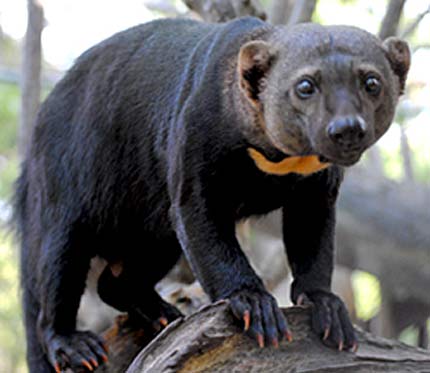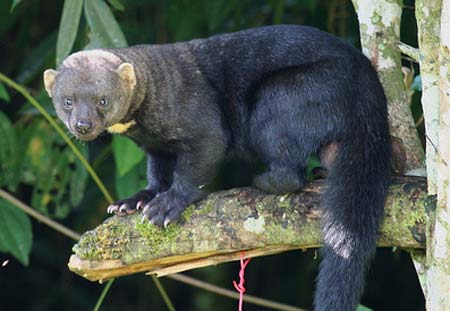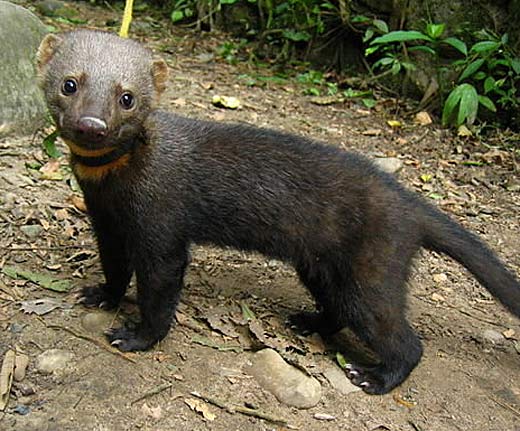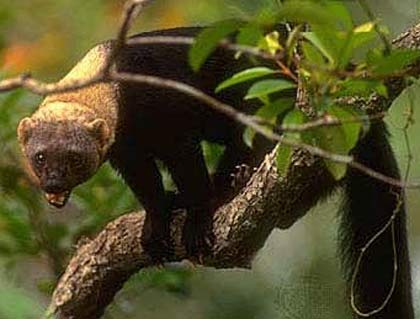Tayra – Clever, Eats Whatever

Vaulting along the treetops, skittering along the forest floor, and shooting through the waters of rivers and lakes. This is the life of the common tayra. Called also by a variety of names including “tolomunco” and “viejo del monte”, the tayra is a common sight all throughout the tropics of Central and South America. Similar in size and appearance to the more familiar weasel, tayras subsist largely on a diet of fruit. Like other members of the weasel family, they are scavengers, and are known to have a very diverse palette. They will take whatever food the forest provides them with; all manner of small creatures and insects, even bird eggs high up in treetops and honey deep in the hives of bees are not beyond the crafty tayra’s reach. They have even been known to pick plantains while they are still green and inedible, hide them away and wait for them to ripen just the way people buy and wait for bananas to turn yellow.

Though tayras are similar to their other cousins in the Mustelidae (weasel) family in many ways, one way which they distinguish themselves is in their reproductive process. Most members of the Mustelidae family display embryonic diapause or “delayed implantation” which is a process by which the mother can delay the birth of her litter until environmental conditions are best. The tayra, however, does not engage in delayed implantation, as their reproductive cycle is more similar to other, non Musteldiae mammals.

Though generally coated all black at birth, a tayra’s head goes grey with age. Their even temperament and playful nature have made them attractive to locals as pets – they make for excellent pest control!

